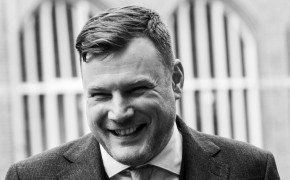Development in dialogue is the integral approach of heritage in a way that stakeholders learn about each other’s motives and incentives.
Development of the Foodhall in the city of Breda was done with the practice of development in dialogue . It is not a standard procedure but an attitude towards redeveloping heritage. It was used in the redevelopment of a fomer cinema. Apart from the remnants of the former cinema, dating back to the beginning of the twentieth century, there were older parts dating back to the middle ages. These parts are directly connected to the rich history of the lords of Breda who lived in the castle nearby. The starting point was complex: multiple interlocking structures from different periods and quality within a bigger building block led to a long vacancy. The understanding from the developer of the possibilities to valorise the cultural heritage and the decision to not list the building by the heritage advisors opened new opportunities and smoothened the process. The decision not to demolish the structures but to reuse them made the project more sustainable. In the policy instrument Resource for the future is stated that heritage is sustainable by definition because of the long term appreciation and use.
In the end all stakeholders got the maximum possible positive result. The Foodhall is widely appreciated by the public, partly because of the unique environment that has been created with preservation of the identity of the former cinema. By “reloading” or “resetting” the identity of the former cinema in its new function, sustainable preservation for the years coming is guaranteed.
Resources needed
No specific funding our human resources.
The heritage advisors need an open attitude to their profession and differing views. They have to have extensive knowledge of the cultural heritage in relation to spatial planning and other disciplines. Design thinking is important.
Evidence of success
Experience learned that strict protection of heritage is not always necessary. Sometimes it is even counterproductive. The complicated redevelopment of the former cinema was done within two years. Similar projects concerning listed buildings can take up to seven years. Especially when stakeholders are digging in there heels and stick to formal procedures more and more.
Difficulties encountered
There is no practical legislation framework to fall back to when difficult decisions (for example removing heritage values) need to be made in the execution phase.
Also the nature of (parts of) the building can limit the room for making changes. The heritage values of the object should be clear.
Potential for learning or transfer
Development in dialogue can be seen as a form of design thinking, because it often is an approach to a wicked problem: seemingly incommensurable objectives and conflicting interests on heritage, environment and economy.
Because of the comprehensive approach by design thinking on a metalevel the practice should be transferable, regardless location, legislation or problem.
However, differences in culture, could be hampering the practice. For instance in more formal settings the process of open and creative dialogue could fail.
Please login to see the expert opinion of this good practice.
Tags: Heritage, Development, Food, Strategy, Sustainable, Buildings








